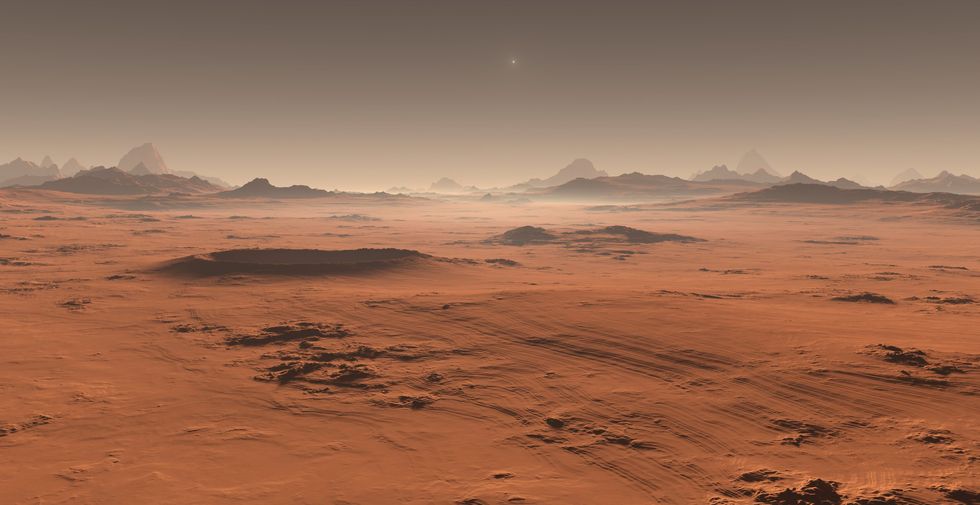Harry Fletcher
Jun 15, 2024
Astronomers Discover Frost For First Time On Volcanoes Near Mars' Equator
Cover Media - Shareable / VideoElephant
The search for life on Mars continues, but experts have found – much to the surprise of everyone who thought it was a dry rock hurtling through space – that thousands of tonnes of water frost have been discovered on its surface.
The Red Planet, it turns out, is home to frost at the very top of the planet’s volcanoes.
New research looks into the Tharsis region Mars, which is the biggest mountain range in the entire solar system.
The mountains sit on the planet’s equator and in the colder months the frost could consist of 150,000 tonnes of water.

It’s a remarkable development, especially given that signs of water are the most important indicator of potential for life out there in the universe.
It was recently put forward that scientists know Mars was home to liquid water for at least 200 million years – but frost existing in this quantity right now is potentially much more significant.
A new study published in the journal Nature Geoscience shows that the frost condenses each evening on the mountains, before being burned off and evaporating in the heat of the morning.
The study’s lead author Adomas Valantinas from Brown University released a statement saying: "We thought it was improbable for frost to form around Mars' equator, as the mix of sunshine and thin atmosphere keeps temperatures during the day relatively high at both the surface and mountaintop — unlike what we see on Earth, where you might expect to see frosty peaks.”
Valantinas added: "What we're seeing may be a remnant of an ancient climate cycle on modern Mars, where you had precipitation and maybe even snowfall on these volcanoes in the past.”
It comes after another fascinating find from the surface of Mars which captured the attention of experts across the world.
A huge pit measuring a few metres across and around 178 metres deep was captured by the High-Resolution Imaging Science Experiment (HiRISE) camera on NASA's Mars Reconnaissance Orbiter (MRO).
It's a potentially significant discovery as humans will need spaces below the surface of the planet to shelter from radiation and dust storms when manned missions to Mars eventually take place in the future.
Sign up for our free indy100 weekly newsletter
How to join the indy100's free WhatsApp channel
Have your say in our news democracy. Click the upvote icon at the top of the page to help raise this article through the indy100 rankings
Top 100
The Conversation (0)














